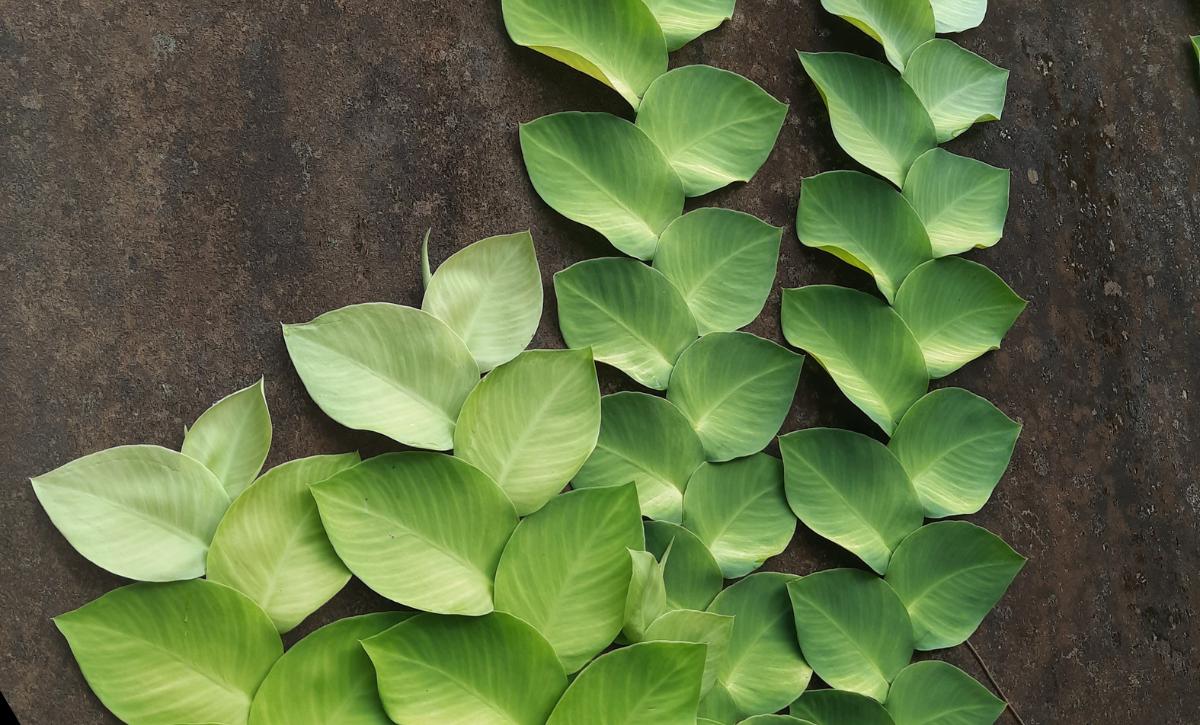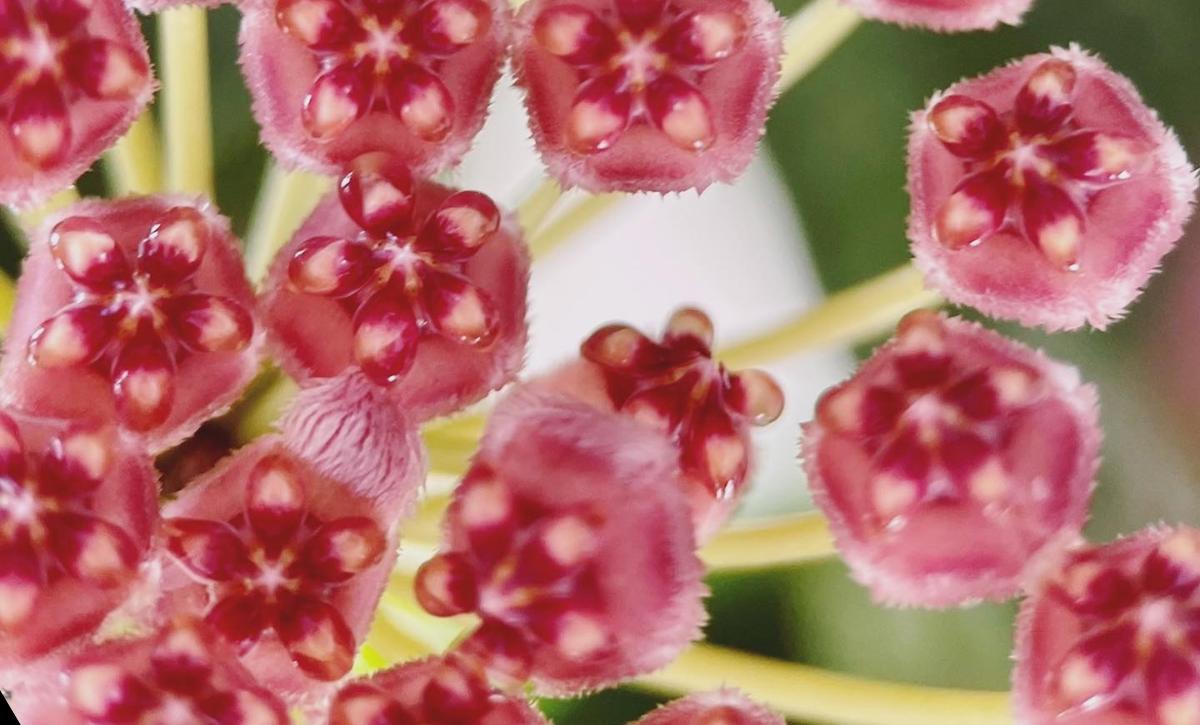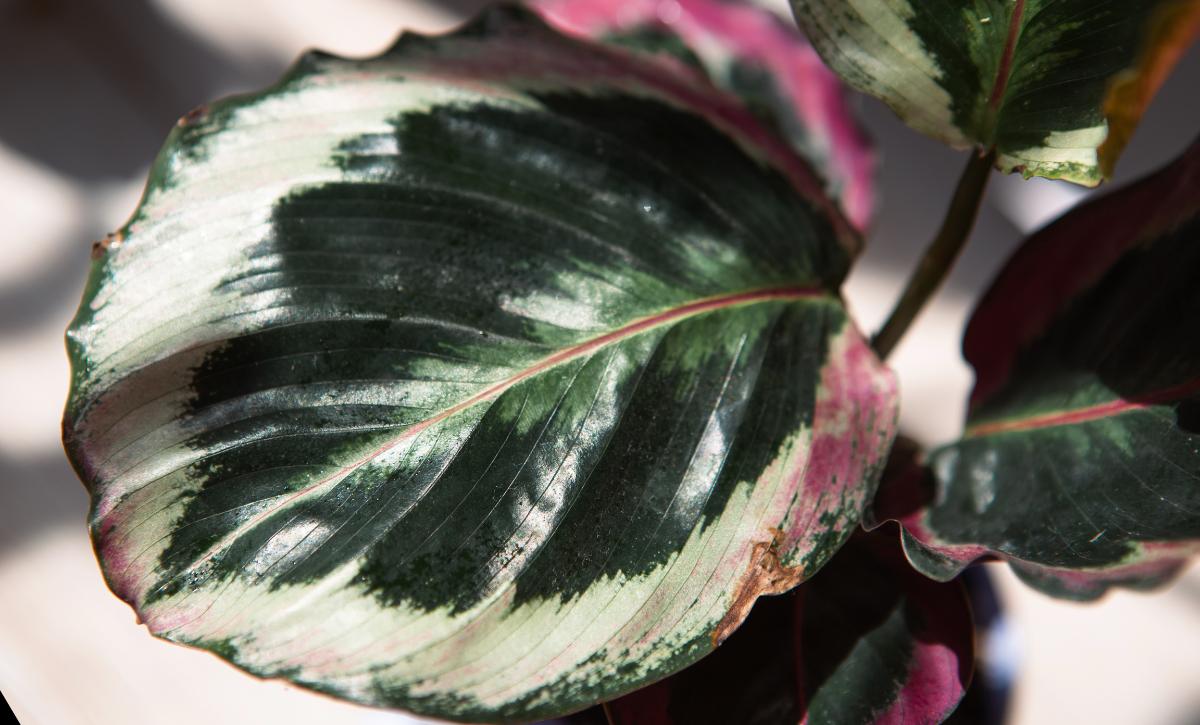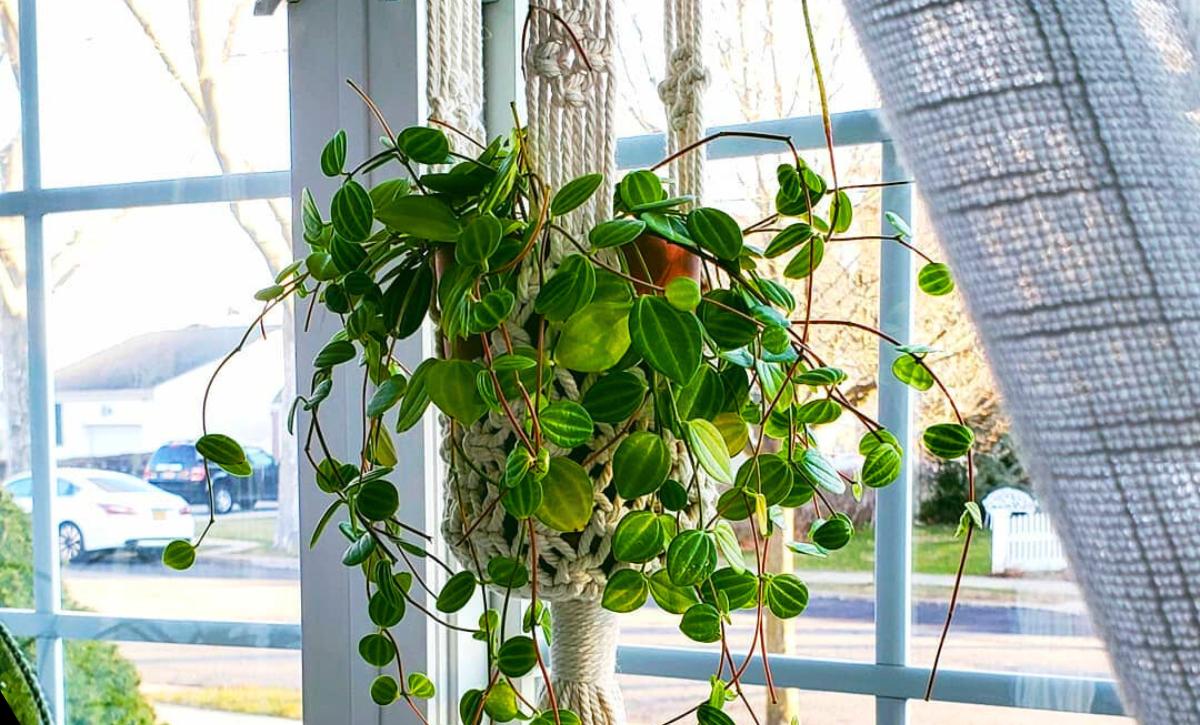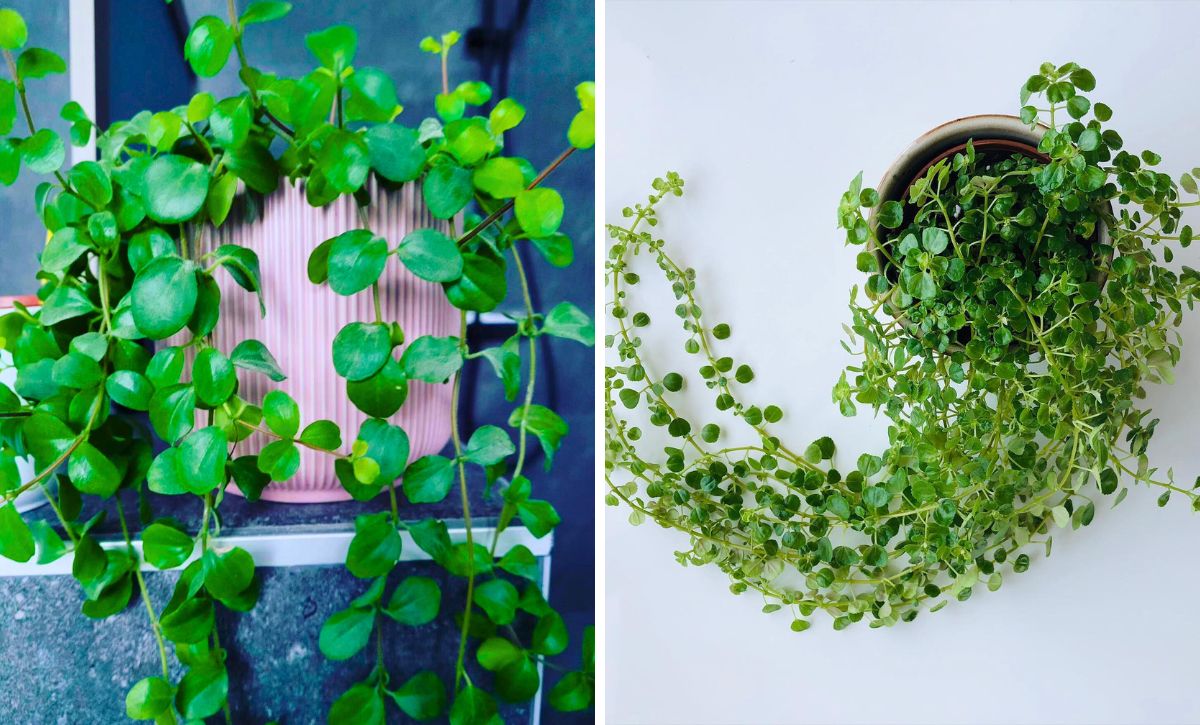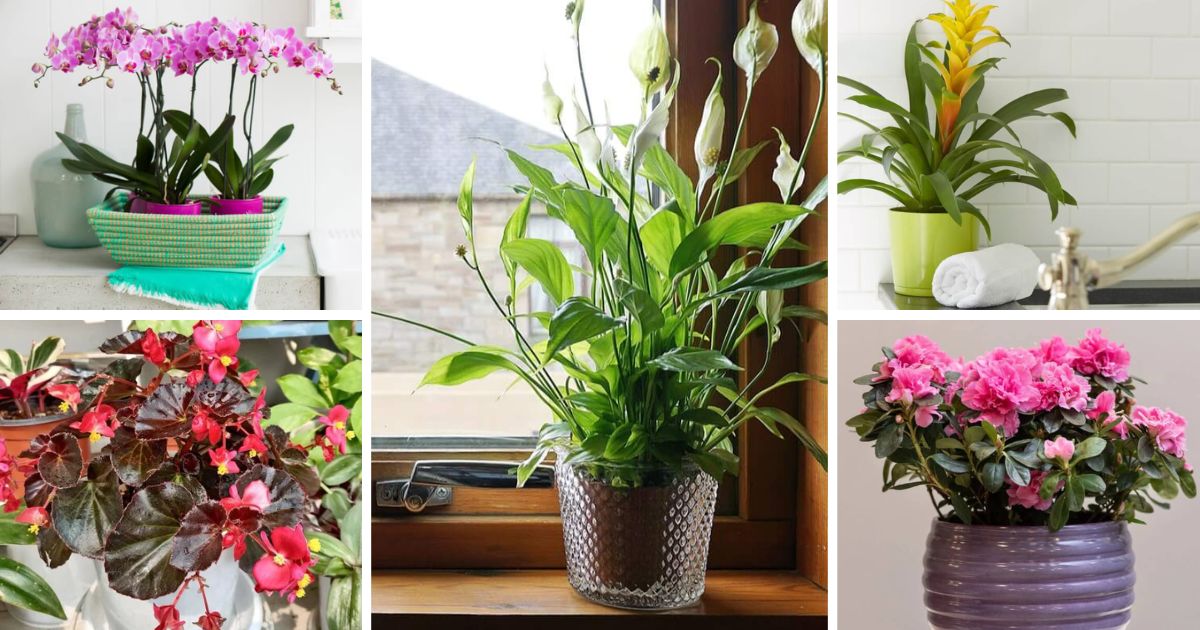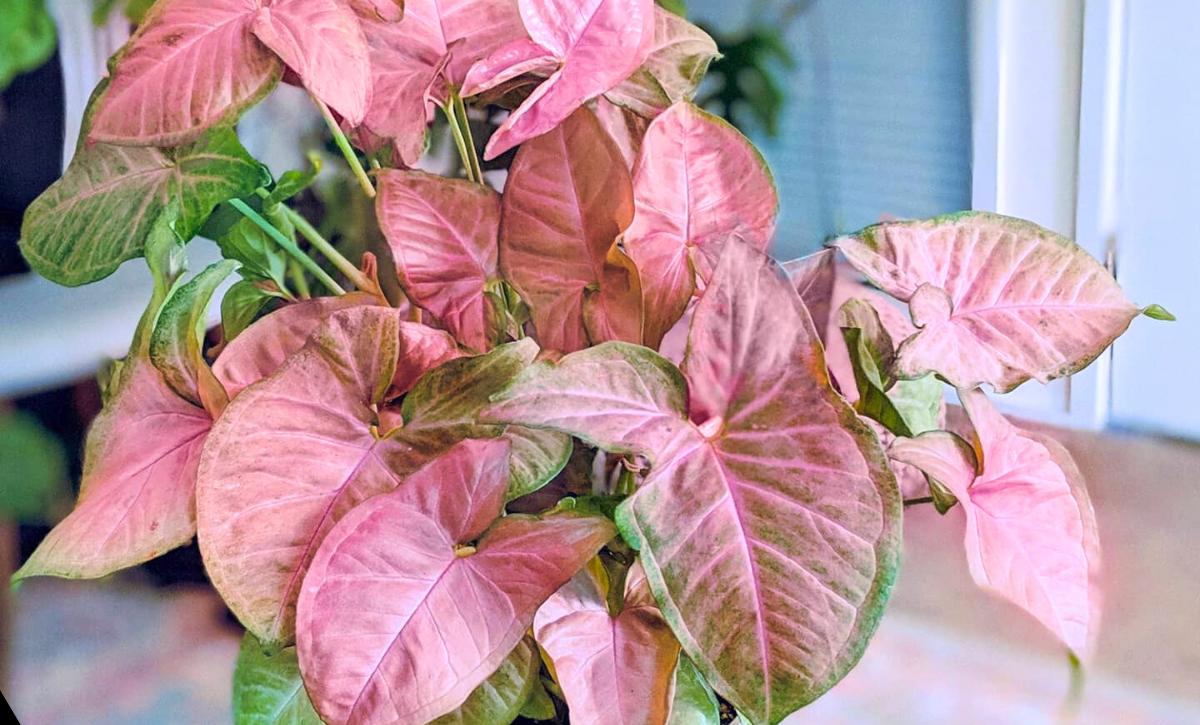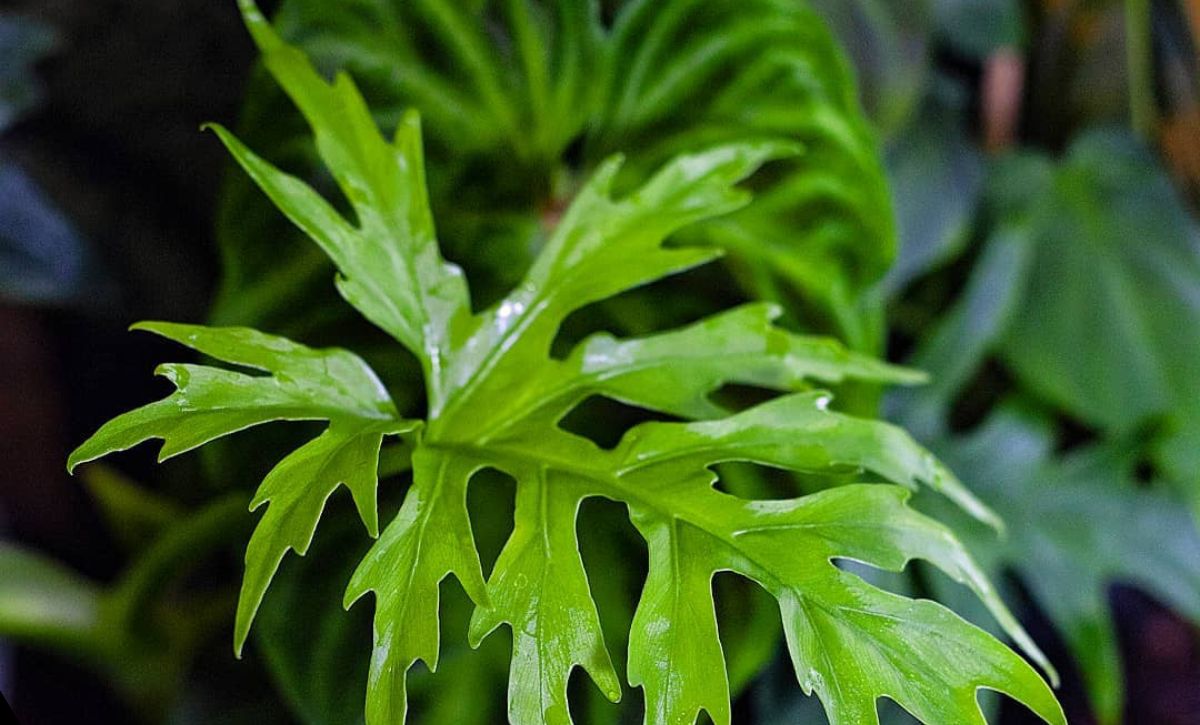The Philodendron Warscewiczii has a name that’s difficult to pronounce, but the plant has easy care requirements.
The Philodendron Warscewiczii is a low-maintenance plant that lights up any garden it’s placed in, and it’s an advantage to own one!
Due to its minimal care requirements, it’s the perfect plant for beginners, and you still get a beautiful plant to adorn your home.

If you are a fan of The Witcher novels and series, you’ll most likely adore this lovely plant. Keep on reading to find more interesting facts about this fantastic plant.
But first, let’s look at the general information:
| Scientific name: | Philodendron Warscewiczii Aurea Flavum |
| Native habitat: | Central America |
| Size: | Up to 3.6 meters (12 ft) in native habitat, average house plant size is between 60 and 80 cm (2 and 3 ft) tall and wide |
| Growth rate: | Fast growing |
| Toxicity: | Toxic to pets and humans |
Although the Philodendron Warscewiczii is toxic to pets and humans, it’s still an excellent choice to integrate into your decor: it will transform your space into a mythical setting for enjoying the adventures of Sapkowski’s Geralt of Rivia.
This article will discuss the history of Philodendron Warscewiczii, its care requirements, and some tips to help your plant thrive.
Let’s start!
Philodendron Warscewiczii Aurea Flavum Care Requirements
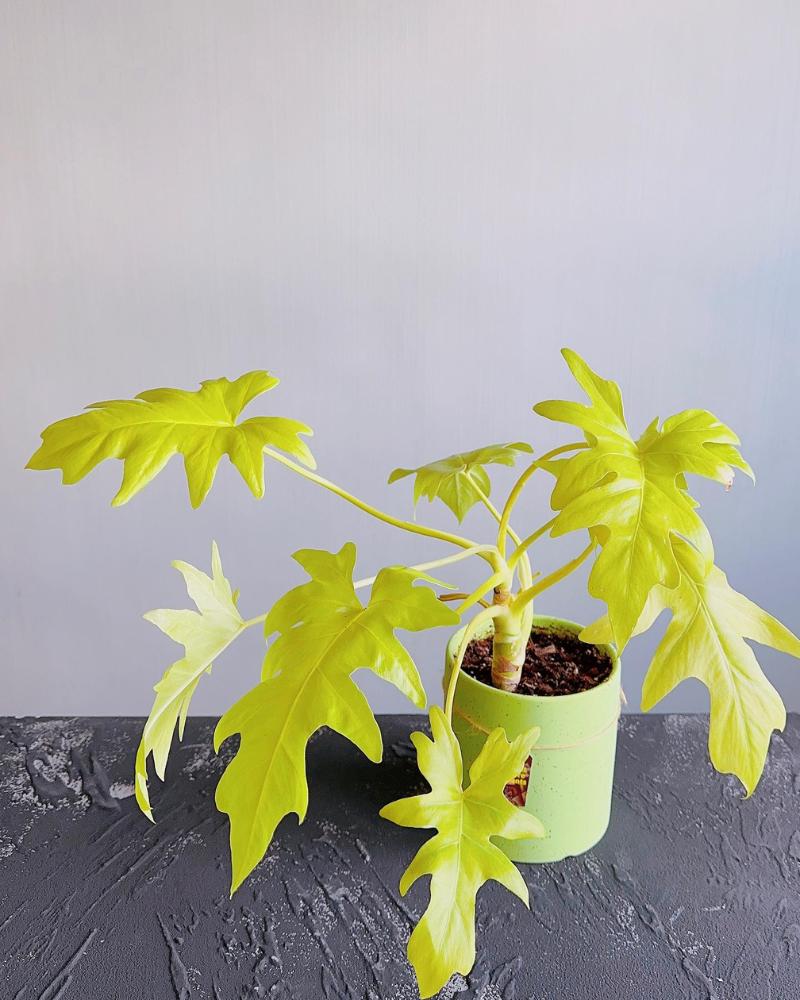
The Philodendron Warscewiczii has a simple care guide: keep it in partial shade and provide it with some water, and your plant is ready.
Still, if you love details regarding plant care, there’s more we will share about this peculiar plant.
You can grow this plant alongside the philodendron’ Lickety Split’: they have similar care requirements as many philodendron plants. Even though a philodendron plant care guide may be straightforward, it will be rewarding.
Light
Also known by its common name, Snowflake Leaf Philodendron, the Philodendron Warscewiczii has similar light requirements to any other philodendron.
The plant thrives in medium to bright indirect sunlight and you should avoid placing it in direct sunlight for too long: it will get sunburn.
If you are growing this plant indoors, place it near a west or south-facing window to receive the required light to flourish.
Too much light makes the plant wither and turn brown or red, while too little sunlight will cause the beautiful foliage of this plant to lose its color.
Water
This beautiful plant’s light requirements are pretty straightforward compared to water requirements. However, the water needs are also very easy to remember!
Check if the topsoil is completely dry by inserting your finger 5-7 centimeters (2-3 inches) deep and feeling the soil. Water your Philodendron Warscewiczii if the topsoil is dry. Don’t water the plant if the topsoil isn’t dry; wait a few more days and come back to check again.
It’s best to water tropical plants and aroids like this philodendron plant to thoroughly wet the soil before you drain the excess water.
The next thing you must do is wait for the topsoil to dry again and repeat the process.
Watering the plant outside these schedules will lead to overwatering and, ultimately, root rot: it can kill your whole plant! Therefore, don’t overwater your plant!
Humidity
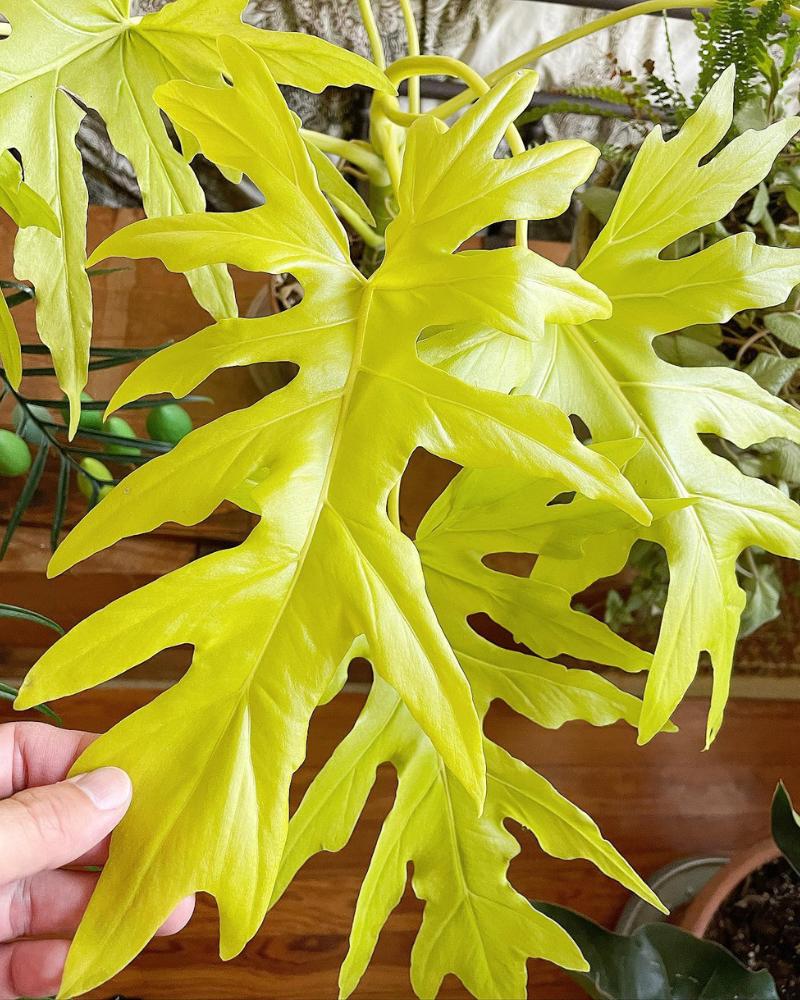
This particular care requirement is an interesting one. Since the Philodendron Warscewiczii is a tropical plant, the obvious assumption would be that it loves humid areas.
Well, guess what? This plant actually adores dry environments pretty much as well. This plant keeps getting more and more enjoyable!
There’s no need to spray the plant with water, buy a humidifier, or use the pebble tray method.
Place this low-maintenance plant in a 50-70% humid or dry room and it will flourish easily.
A fun historical fact is that the Polish first discovered the plant in a forested area. This might explain its tendency to adapt to dry and humid conditions.
Temperature
The temperature requirements for the Philodendron Warscewiczii will come as no surprise. The tropical plant needs warmth, similar to a tropical rainforest, as it adorns your home.
The plant can’t tolerate temperatures lower than 10℃ (50℉). Keep your thermostat between 15 and 30℃ (60 and 86℉), and your plant will be ready. There aren’t any other special requirements needed.
You should note that the plant dislikes sudden temperature changes, drafts to be specific, so ensure you protect it.
Soil
The Philodendron Warscewiczii thrives in well-drained soil. This medium is a critical factor for the plant to reach its potential!
You can easily make well-draining soil at home, so don’t worry. You only need to grab some perlite or pumice while purchasing your potting mix.
A well-drained soil ensures the roots have enough oxygen, preventing them from drowning in water and getting infected with root rot.
Increase aeration in your soil by adding orchid black, and incorporate horticultural charcoal to eliminate all impurities.
Fertilizer
The Philodendron Warscewiczii doesn’t have special requirements regarding fertilizer. You can buy any fertilizer made for tropical plants and use it.
Pro Tip: Meeting all your plants’ needs using homemade fertilizer is tricky, so buying one at the store is better.
Fertilize your philodendron during its growing seasons, spring and summer, to achieve a tall and lush plant. Don’t fertilize during winter: The plant will be dormant, and you’ll be accomplishing nothing.
Tropical plants like philodendrons prefer water-soluble fertilizers rich in organic content and nutrients. Ensure you don’t overfeed your plant since it will cause severe damage.
Dissolve the fertilizer in water and feed it to your plant in infrequent and small doses. This enables your philodendron to go through an adjustment period.
Increase the dosage after the adjustment period and feed your plant more regularly. However, avoid over-fertilizing since it can lead to fertilizer burn. Fertilizers can damage the roots and burn the plant’s leaves.
Time of Blooming
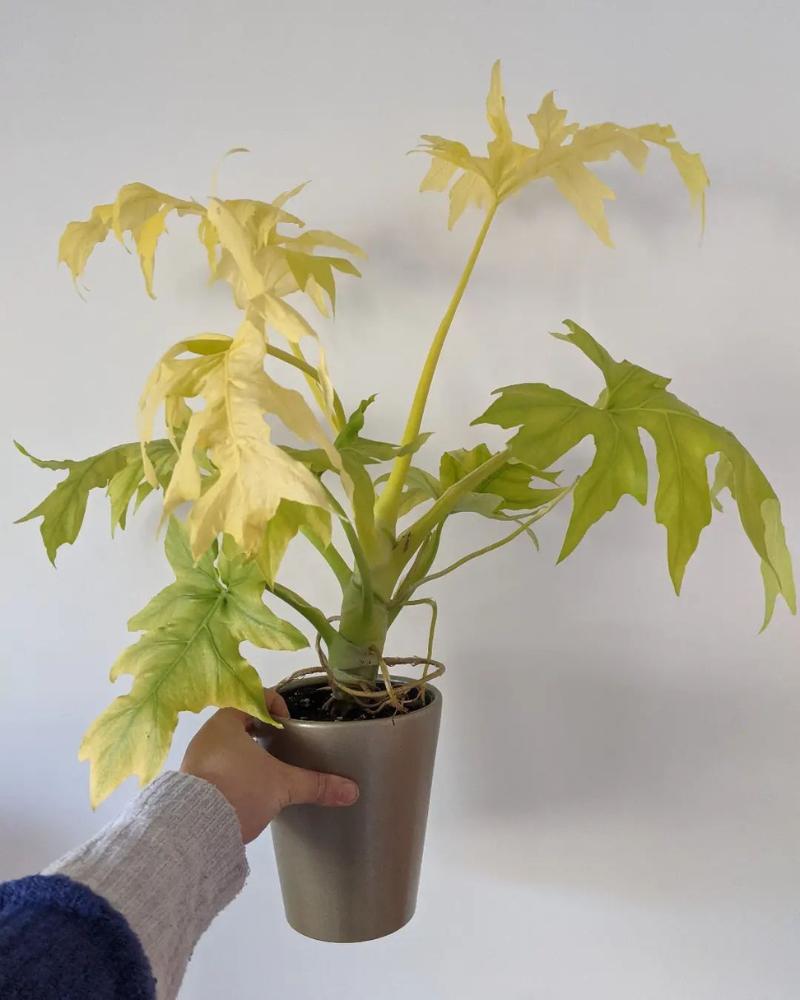
via bethbotanical
The Philodendron Warscewiczii usually blooms in the summer. If you are lucky enough, you can enjoy the plant’s special white snowflakes throughout the summer.
Be cautious of insects and pests since the flowers emit a particular smell that they love.
Propagation
You can propagate this philodendron in several ways: only find the best method. I recommend using stem cuttings for propagation rather than seeds; let’s leave that to the professionals at the nurseries.
The best time to propagate philodendrons, or any plant, is during the growing period. This is during spring when it comes to the Philodendron Warscewiczii.
Cut off a stem with three nodes and some roots using a pair of gardening shears. Take a pot with well-drained soil and place the cutting in it. Press down on the soil to make the cutting stand firm and upright.
Keeping the soil moist for the first few weeks is essential until the new plant is developed.
The Philodendron Warscewiczii tends to develop its root system quickly, so you won’t need any growth hormone. Just place it in bright indirect sunlight and avoid direct light!
Repotting
This philodendron is fast-growing, meaning you’ll have to repot it regularly throughout its lifetime.
Roots sticking out of the pot usually indicate that your Philodendron Warscewiczii needs repotting.
Ensure you repot your plant during the growing season, ideally spring, and transfer it to a larger nursery pot.
As discussed earlier, this particular philodendron plant needs well-draining soil. You should note that getting the plant out of its container can prove to be difficult, so be very careful.
Ensure your philodendron gets enough time to adapt to its new environment to realize all the benefits quickly.
Pruning
Pruning might seem tiresome work, but you won’t regret the results when executed correctly.
You can prune this plant for two reasons: to eliminate dying or dead leaves or for a mature plant to fit a designated area. Dead or dying leaves are usually brown, red, or yellow.
Additional Information About Philodendron Warscewiczii
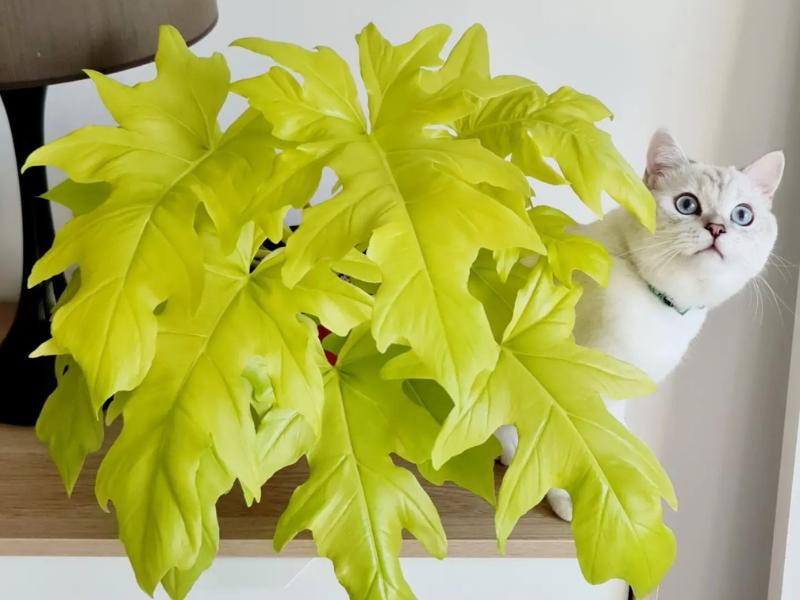
via albos_garden
Variegated philodendrons look best when paired with other species. This plant will significantly complement your alocasia, monstera, or philodendron bipinnatifidum.
Similar to several other members of the Araceae family, the Philodendron Warscewiczii contains calcium oxalate in its leaves. Calcium oxalate is toxic to pets and humans, causing respiratory issues and skin irritation. Nonetheless, you shouldn’t face any challenges as long as you are careful.
Therefore, don’t allow a few inconveniences to deter you from owning this gorgeous plant. This is common for every plant!
Leaves
The Philodendron Warscewiczii is also called the golden leaf due to its large, segmented yellow leaves. The foliage of this plant creates an oriental temple vibe wherever they are placed. Intensify this golden hue by pairing it with a Lemon Lime philodendron.
The foliage of this plant can grow to 5-7 centimeters (2-3 inches) tall and wide, making it the perfect plant for adorning a small reading nook.
Common Pests and Diseases
The Philodendron Warscewiczii is susceptible to several diseases and pests, but these problems can be quickly solved and easily avoided.
This philodendron is attacked by common houseplant pests, including mealybugs. You should eliminate them as soon as possible since they feed on your plant and destroy it.
Use rubbing alcohol to remove them and apply an insecticide to prevent them from returning. Ensure the pesticide you use isn’t harmful to your plant.
The Philodendron Warscewiczii is also prone to pests such as aphids and spider mites, which resemble a little carnival. Still, they can cause severe damage to your plant when let alone, so be very careful! Spray a pesticide on your philodendron to get rid of them.
Diseases
One common disease when it comes to philodendrons is Erwinia Leaf Spot. This disease has translucent, water-soaked, or pale yellow marks on the Philodendron Warscewiczii’s leaves, which spread and turn red, orange, or yellow.
Erwinia Leaf Spot is a bacterial infection customarily transmitted to plants through unsterilized shears. Therefore, ensure you sterilize your gardening scissors when pruning your indoor plants to prevent this bacteria from harming your philodendron.
The disease thrives well in humid environments. Immediately isolate a plant infected with Erwinia Leaf Spot from other plants and prevent its spread by removing the infected parts.
You can also lower the temperature to about 21℃ (70℉). This will limit the development of the disease while protecting your plant.
You can spray medicines or remedies such as streptomycin once a week to combat the disease. Remember to read and follow the instructions as stated on the container.
Helpful Tricks And Tips
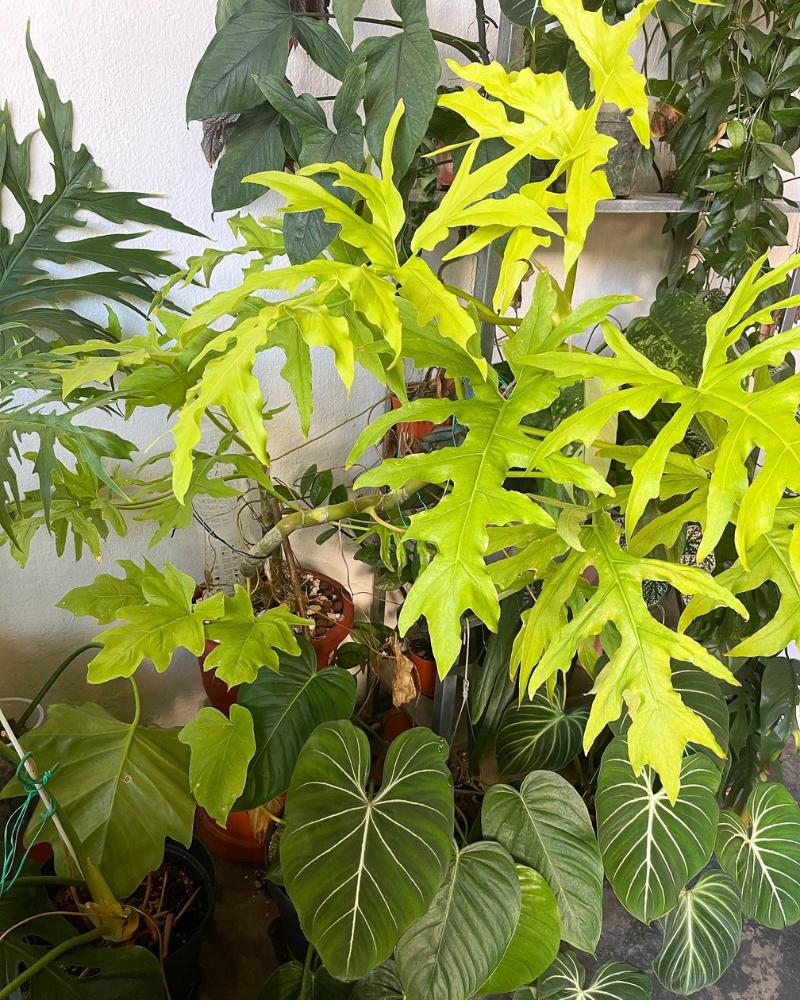
via baloo.jungle
The following section will highlight some valuable tricks to get the best out of your philodendron:
- The best fertilizer for the Philodendron Warscewiczii is a nitrogen-based fertilizer. It makes your plant healthier and helps it produce gorgeous leaves.
- Use a wet cloth to clean the dust off the foliage, and wipe the leaves dry afterward.
- Keep the soil moist, but ensure it doesn’t become waterlogged since it can lead to root rot.
- This plant prefers humid environments: it’s a tropical plant. Provide your plant with medium to slightly high humidity levels to achieve golden leaves to light up your home.
Frequently Asked Questions
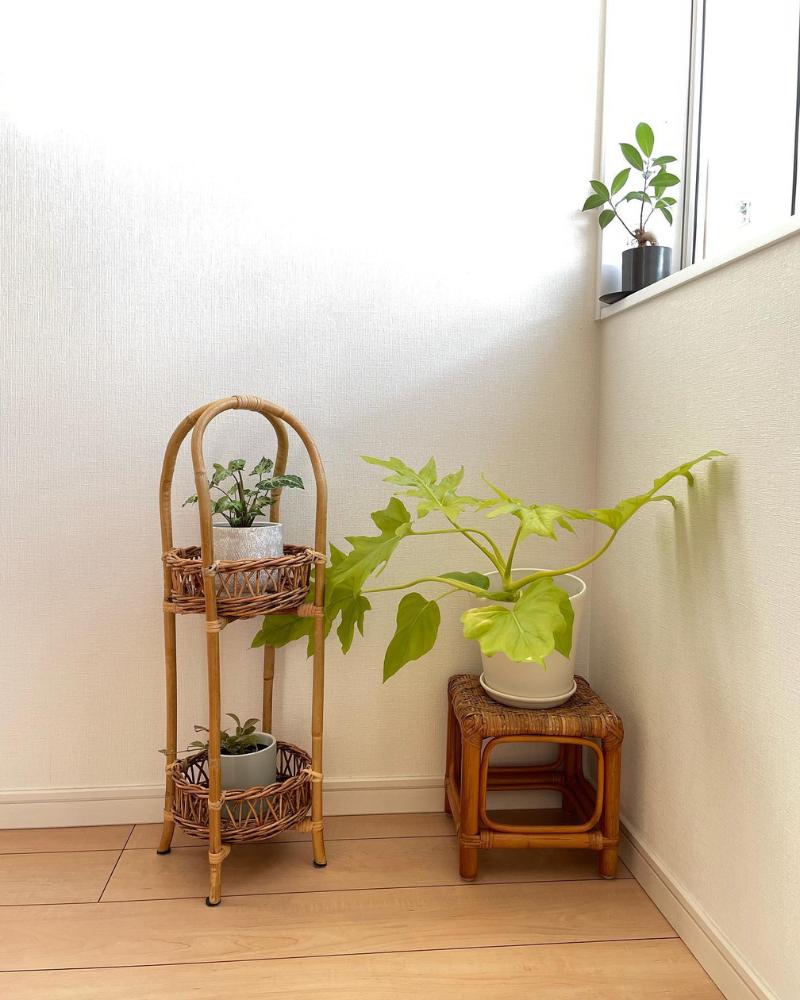
via mi8682_thth
Now that we’ve discussed the care guide for this plant and some cool tricks, let’s look at some of the most asked questions about this plant.
How is Philodendron Warscewiczii pronounced?
The correct pronunciation for Philodendron Warscewiczii is vars-she-vich-ee-eye.
I know it looks challenging, but you’ll get the hang of it with some practice!
Is the Philodendron Warscewiczii rare?
Yes, this plant is a rare philodendron species.
You might need to look around in many places before you get your hands on this particular philodendron.
Additionally, it’s pretty expensive, making it even rarer. You’ll need to invest several hundred dollars to acquire this magnificent plant.
However, it’s safe to say that it’ll be worth every penny.
What is the rarest philodendron?
There are several rare philodendrons out there, but the rarest has to be Philodendron Spiritus Sancti.
Philodendron enthusiasts dream of adding this rare plant to their collection. However, given its rarity, the plant comes at a hefty price.
Nonetheless, philodendrons will never go wrong when uplifting your home’s decor.
Conclusion
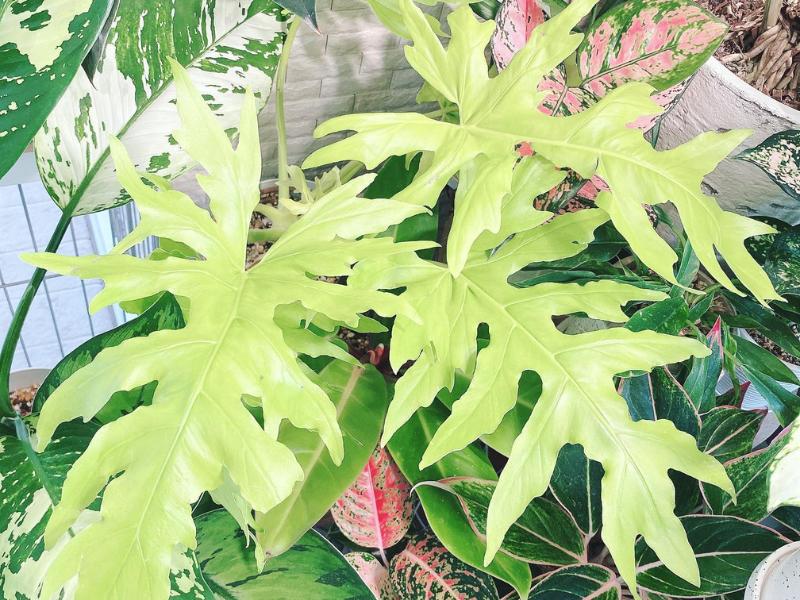
via no_zo_mi_plant
The Philodendron Warscewiczii is a low-maintenance plant that is ideal for beginners. With all the knowledge we have disclosed about this rare philodendron, I’m confident you can easily take care of your plant.
Remember to avoid overwatering the plant. This can lead to root rot and kill your whole plant! Ensure the soil is moist and only water when the topsoil is dry.
That’s all for today. See you next time!

